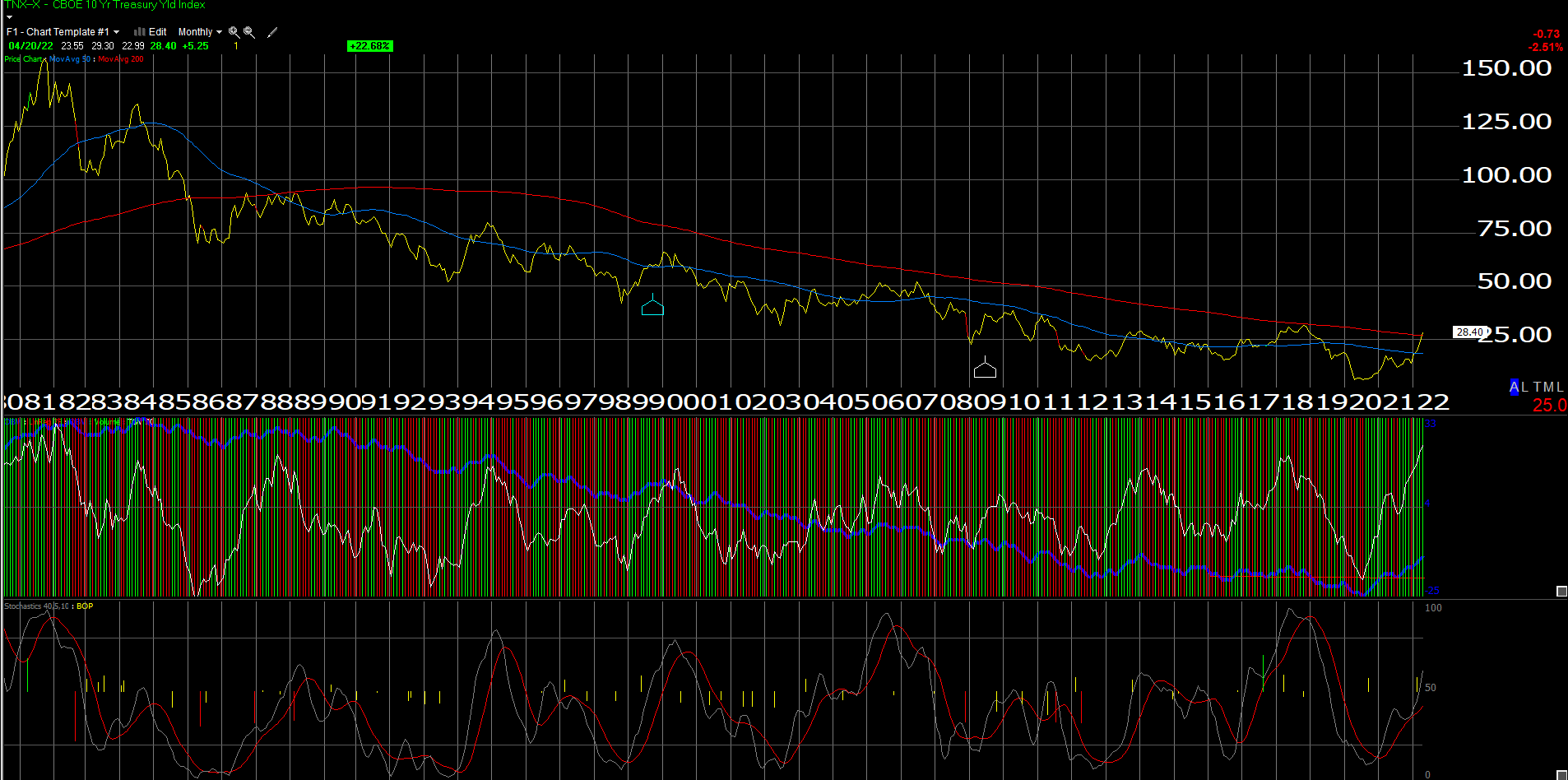Picking interest-rate bottoms and tops is far more complicated than trying to pick stock market bottoms and tops, but this graph will give us some yield levels, focusing on the last decade or since 2010.
What’s unusual about the last 14 years – 2008 to 2022 – is that we’ve (investors, Americans, etc.) have now experienced two separate periods of zero fed funds rates in this period, and I wonder this is now the norm or do the next 10 years mean that investors see gradually higher interest rates and a reversion to the mean so to speak, which will not only influence stock market valuation, but housing, and auto loans, and consumer finance.
The three levels that are interesting from the last decade are the following points:
- 4.01% yield hit in January, 2010, after the bounce in the S&P 500 following the March 9, 2009, generational low for the S&P 500;
- The 3.04% yield hit in January ’14, following the Bernanke Taper Tantrum, whereupon President Obama replaced Bernanke with Janet Yellen in January ’14 as Fed Chair, ensuring his term would see zero interest rates until he was gone from office;
- The 3.24% yield hit in October ’18 during Powell’s fed funds tightening regimen during the Trump Administration, which tightening ended in December ’18, January ’19;
My own guesstimate is that the 10-year Treasury yield will get to 3% again if Jay Powell moves the fed funds 50 basis points at the May ’22 meeting and commences quantitative tightening at the same time. Above 3.24% – 3.25% on the 10-year Treasury, and we could be in a new interest rate paradigm.
While the mainstream financial media trumpets 7% – 8% inflation, the fact is the 10-year Treasury yield at 2.85% is telling us inflation is temporary, so either the bond market is very, very wrong, or inflation is coming down in the next 8 months. (Most retail investors don’t understand the concept of “real” returns on Treasuries and that over the last 50 years, until the last 12, the real return on Treasury securities averaged 2% so individual investors that own Treasuries today, are earning negative real returns thanks to inflation.)
Summary
My opinion is that – after 2008 – and the housing and stock market deflation that occurred that decade (from 2000 to 2009), the Federal Reserve wanted a little inflation. Deflation is far worse than inflation since it discourages consumption and wealth creation. It’s finally 2022, and the US populace is seeing real inflation, and that’s probably a good thing. Bond market investors – particularly the ones my age – are only familiar with the steady decline in interest rates since the early 1980s.
Are we in a new paradigm for interest rates? It’s too early to tell. What’s the “true” inflation rate today? It’s probably in the high 3% – low 4% area, implying that the 10-year Treasury yield is still overvalued, but not as much as the headlines would lead you to believe.
Clients have been underweight duration with their bond and fixed-income holdings coming out of 2020. The duration on corporate high-grade bond funds like the LQD and the AGG, was around 9 years at the end of 2021, so short-term high yield ETF’s like the SHYG were perfect for clients to get yield and limit interest rate risk, with its 4.5 year duration.
If early March 22’s crude oil spike to $131 was the top (and many good technicians think it was), I think that is significant for the bond market. Tom Lee and Fundstrat have written that gasoline is now just 3% of the average household budget, but I do think crude and gasoline are the face of inflation and are psychologically meaningful for the average American.
If Jay Powell moves aggressively at the May ’22 Fed meeting and the 10-year Treasury yield cannot trade through that 3% – 3.25% peak, then it’s probably time to extend maturity and duration.
